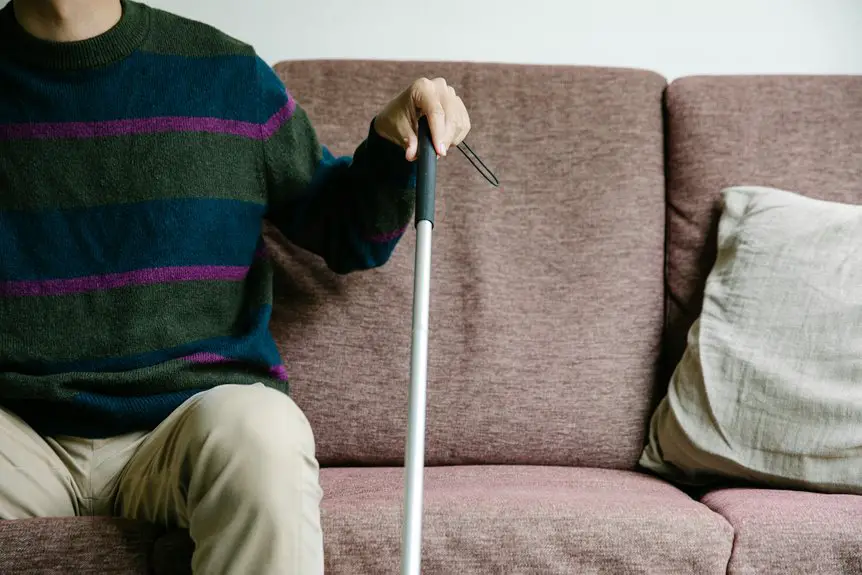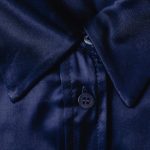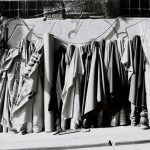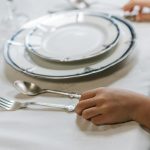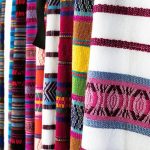Fabric costs in China vary based on type and quality. You’ll pay around $1 to $2 per meter for basic cotton, $3 to $12 for higher-quality cotton, and silk fabrics can range from $10 to over $20 per meter depending on purity and weave. Synthetics like polyester are cheaper, around $1 to $3 per meter. Buying in bulk usually lowers prices. Want to know how factors like quantity and supplier relationships affect costs? Keep exploring to find out more.
Table of Contents
Key Takeaways
- Cotton fabric prices in China range from $1 to $12 per meter depending on quality from low to premium grade.
- Silk fabrics are more expensive, with pure mulberry silk and handwoven types costing significantly higher.
- Synthetic fabrics like polyester and nylon typically cost between $1 and $5 per meter, offering affordability and durability.
- Bulk purchases and off-peak season buying can substantially reduce fabric costs in China.
- Building supplier relationships and negotiating based on quality and order volume help secure better fabric prices.
Common Types of Fabrics Available in China
While exploring fabric options in China, you’ll find a wide range of common types that suit various needs and budgets.
Cotton is a popular choice due to its breathability and versatility, perfect for everyday wear and home textiles. Silk stands out for its luxurious feel and vibrant sheen, often used in high-end garments and traditional attire.
Cotton’s breathability suits daily wear, while silk’s luxury shines in high-end and traditional clothing.
Linen offers a lightweight, durable option favored in warmer climates. Polyester and nylon are widely available synthetic fabrics, valued for their strength, wrinkle resistance, and affordability.
You’ll also encounter blends combining natural and synthetic fibers to balance comfort and durability. Whether you’re sourcing fabric for fashion, upholstery, or crafts, China’s market provides diverse materials that cater to different styles and functional requirements.
Average Price Range for Cotton Fabrics
When you shop for cotton fabrics in China, you’ll notice prices vary based on factors like quality and production methods.
Higher-grade cotton typically costs more, while standard options stay affordable.
Comparing these price ranges will help you make the best choice for your needs.
Cotton Fabric Price Factors
Since cotton fabric prices in China vary widely, you need to understand the key factors influencing costs before making a purchase.
Several elements affect the price you’ll pay, and knowing these helps you make smarter buying decisions.
Here are the main factors to evaluate:
- Cotton quality: Higher-grade cotton demands a higher price.
- Fabric weight and thickness: Heavier fabrics cost more to produce.
- Dyeing and finishing processes: Special treatments add to the price.
- Order quantity: Bulk orders often get better rates.
- Seasonal demand: Prices can fluctuate based on supply and demand cycles.
Price Comparison by Quality
Understanding the factors that influence cotton fabric prices sets the stage for comparing costs based on quality.
When you look at cotton fabrics in China, you’ll notice prices vary widely. Lower-quality cotton usually costs around $1 to $2 per meter. These fabrics are often less durable and may have imperfections.
Mid-range cotton, priced between $3 and $5 per meter, offers better texture and strength, suitable for everyday clothing.
Premium cotton, like Egyptian or Pima, can range from $6 to $12 per meter, boasting superior softness and longevity.
Your choice depends on your project’s needs and budget. By knowing these price ranges, you can make informed decisions and balance quality with cost effectively.
Pricing Details for Silk and Satin Fabrics
Although silk and satin often get grouped together, their pricing in China reflects distinct factors like production methods and quality grades.
Silk and satin pricing in China varies significantly due to production methods and quality grades.
When you’re looking to buy, knowing these differences helps you get the best value. Silk, being a natural fiber, generally costs more due to labor-intensive harvesting and weaving, while satin’s price varies based on whether it’s made from silk or synthetic fibers.
Consider these key pricing details:
- Mulberry silk commands the highest price due to its fine quality.
- Satin made from pure silk is pricier than polyester satin.
- Handwoven silk fabrics cost more than machine-made versions.
- Dyeing and finishing techniques add to the final cost.
- Bulk purchases often reduce per-meter prices considerably.
Keep these points in mind to navigate the silk and satin market efficiently.
Cost Breakdown for Synthetic Fabrics
When you shop for synthetic fabrics in China, you’ll notice their costs hinge on factors like fiber type, production scale, and finishing processes.
Common synthetics include polyester, nylon, and acrylic, each priced differently. Polyester tends to be the most affordable, usually ranging from $1 to $3 per meter, thanks to its widespread availability and efficient production.
Nylon commands a slightly higher price, often between $2 and $5 per meter, due to its durability and elasticity. Acrylic fabrics typically fall between $1.50 and $4 per meter, favored for their wool-like texture.
Additionally, specialized finishes like water resistance or flame retardant coatings can add to the cost. Bulk orders usually lower the per-meter price, while smaller quantities might carry a premium.
Understanding these components helps you budget effectively when sourcing synthetic fabrics in China.
Factors That Influence Fabric Prices in China
Since fabric prices in China vary widely, you need to take into account several key factors before making a purchase. Understanding these will help you get the best value for your money.
Fabric prices in China vary greatly; consider key factors to ensure the best value for your purchase.
Here are the main elements that influence fabric costs:
- Material quality: Higher quality fibers cost more but offer better durability and feel.
- Fabric type: Natural fibers like silk or cotton generally cost more than synthetics.
- Dyeing and finishing: Complex patterns or special finishes increase the price.
- Manufacturer reputation: Established mills often charge premium prices for consistent quality.
- Market demand: Popular fabrics can see price spikes during peak seasons or trends.
How Quantity Affects Fabric Pricing
Because buying fabric in larger quantities often lowers the price per meter, understanding how quantity affects fabric pricing can help you make smarter purchasing decisions.
When you order bulk fabric in China, suppliers usually offer tiered pricing, meaning the more you buy, the less you pay per unit. This happens because manufacturers can reduce their production and shipping costs with larger orders. For example, purchasing 100 meters might cost considerably less per meter than buying only 10 meters.
However, be mindful of minimum order quantities (MOQs) set by suppliers. If your order is below that threshold, you mightn’t qualify for discounts.
Where to Source Fabric at Competitive Prices
Where can you find the best fabric deals in China without sacrificing quality? Start by exploring these top sources to get competitive prices:
- Yiwu Market: Known for a vast variety of textiles at wholesale prices.
- Guangzhou Fabric Market: Offers diverse fabric types with options for both small and large orders.
- Shanghai Textile City: A hub for high-quality, trendy fabrics perfect for fashion designers.
- Online Platforms (Alibaba, Made-in-China): Convenient for comparing prices and suppliers quickly.
- Local Textile Factories: Direct purchases can cut out middlemen and lower costs.
Each option suits different needs, whether you want bulk quantities or specialized fabrics.
Tips for Negotiating Fabric Prices in China
When negotiating fabric prices in China, understanding the local market dynamics gives you a significant advantage. Start by researching typical price ranges to avoid overpaying.
Build rapport with suppliers—show respect and interest in their business, as relationships matter here. Always request samples before committing; quality directly influences price.
Don’t hesitate to ask for discounts, especially when ordering in bulk or establishing long-term partnerships. Be clear about your budget but remain flexible, allowing room for negotiation.
Use multiple quotes to leverage better deals while staying transparent to maintain trust. Finally, consider timing your purchases during off-peak seasons or trade fairs when suppliers may offer better rates.
Staying patient and polite can help you secure the best fabric prices in China.
Frequently Asked Questions
What Is the Environmental Impact of Fabric Production in China?
Imagine rivers dyed every color of a neon rainbow—welcome to fabric production’s environmental party in China. You can’t ignore the massive water waste, toxic chemicals, and pollution, but hey, at least the clothes are colorful, right?
How Can I Verify the Authenticity of Silk Fabrics Purchased in China?
You can verify silk’s authenticity by checking its texture, smell, and burn test results. Genuine silk feels smooth, smells like burnt hair when tested, and produces ash, unlike synthetic fabrics. Always buy from trusted sellers.
What Are the Shipping Costs for Fabric Orders From China?
Funny you ask—shipping costs from China vary a lot! You’ll find prices depend on fabric weight, shipping method, and destination. Expect anything from $20 for small parcels to hundreds for bulk orders via sea freight.
Are There Any Import Taxes on Fabrics From China?
Yes, you’ll likely face import taxes on fabrics from China. These vary by country and fabric type, so check your local customs regulations. Don’t forget to factor these costs into your overall budget for accuracy.
How Do Fabric Quality Standards in China Compare Internationally?
You won’t find fabric quality standards in China that are out of this world—they’re actually on par with international benchmarks. You can trust Chinese manufacturers to meet global expectations consistently, ensuring reliable, high-quality textiles for your needs.
- Where to Buy Sherpa Suede Fabric - July 12, 2025
- How to Draw or Illustrate the Texture of Suede Fabric - July 12, 2025
- What Is Baseball Suede Leather Fabric? - July 12, 2025

